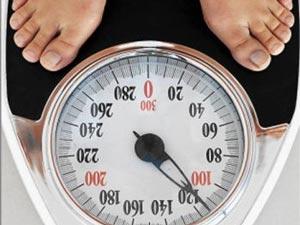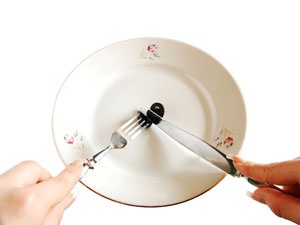Photographs: Courtesy LifeMojo.com Courtesy LifeMojo.com
People seem to use the terms weight loss and fat loss interchangeably, not understanding the difference between them. It is important, however, that you do understand -- there is a big difference between losing weight and losing fat.
What's the difference? Let's start by defining weight loss and fat loss.
Weight loss is the loss in your body weight -- the sum weight of your bones, muscles, organs, body fat and water in the body.
Fat loss is the loss in your body fat -- the amount of fat your body carries. Healthy goals are 12-20 percent body fat for men and 18-25 percent for women.
Weight is good, not bad; you do not want to lose weight, and more importantly for your health, you do not want to lose muscle. Our weight is made up of tissue, muscle, bone, blood, fat, water, and the rest of our physical bodies.
Muscle, like every other component of our physical make-up, is most important.
And fat is also a necessary, vital part of our physical make-up. Excess fat, however, is bad news and that is what you should focus on -- fat loss.
is one of the most trusted sources of information about good health and wellness. To those who want to manage their health themselves, LifeMojo provides necessary information, tips, tracking tools and support to help them stay informed and motivated.
On the weighing scale, it will look like you're not making progress
Photographs: Courtesy LifeMojo.com
As you know, a scale measures how much weight you have lost, but it will never tell you where this weight was lost from.
This is where the problem lies. Carbs bind to water. So eating less carbs will make you lose weight (water loss). This is why you lose so much weight on a diet like the Atkins within the first two weeks: it's mostly water.
Of course, increasing your carb intake will make you gain weight again.
On the other hand, you'll gain muscle while losing fat when you get into strength training. But on the weighing scale it will look like you're not making progress: your body-weight doesn't change. Two people with the same height can weigh the same, but look completely different as one has lower body fat than the other. For this reason, a bodybuilder or a large athlete can weigh much more than the average person.
There is no need for starvation or 'all-liquid' diets
Photographs: Courtesy LifeMojo.com
The best way to monitor your progress when embarking on a new diet, is to measure your body fat percentage and your lean body mass. Lean body mass is your weight excluding fat. Lean body mass includes bone, muscle, and other fat-free tissues with the majority of this being muscle.
By measuring these two items, you will be able to determine how much fat you are losing and whether or not you are losing any muscle.
The simplest way to measure your body fat percentage is through skinfold testing. Another method is using a machine, which displays the body fat percentage using the bioelectrical impedance method.
Not only is it healthier for you to lose fat, you will feel better while you're doing it. There is no need for starvation or 'all-liquid' diets. Eating smaller meals more frequently is the key to this process. Starvation diets actually slow down your metabolism in the long run, making it harder for you to keep the weight off.
Stop starving yourself and start starving your fat
Photographs: Courtesy LifeMojo.com
If you want to lose fat here are a few tips to help you:
- Make vegetables your primary source of carbohydrates.
- Eat five to six small meals a day, consisting of high protein, moderate carbs, and low-fat.
- Do cardiovascular workouts at least three or four times a week.
- Do intense weight-training at least three or four times a week.
- Eat more raw foods.
Focusing on fat loss will help to ensure that your body looks great and you feel great as well. It will give you the body you truly desire without sacrificing your diet and your health. So stop starving yourself and start starving your fat! The result will be a leaner, healthier you!






Comment
article